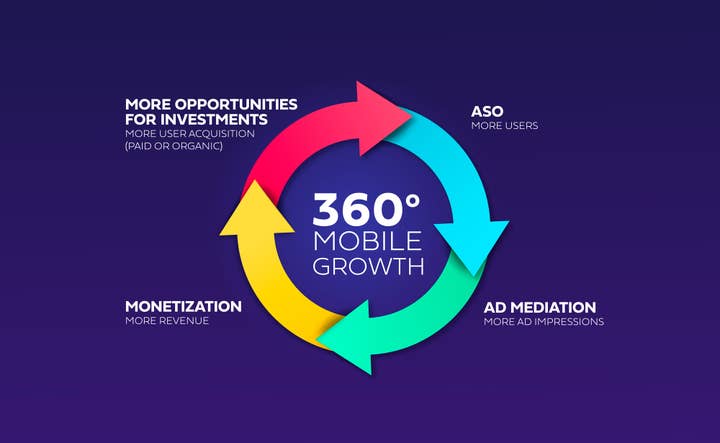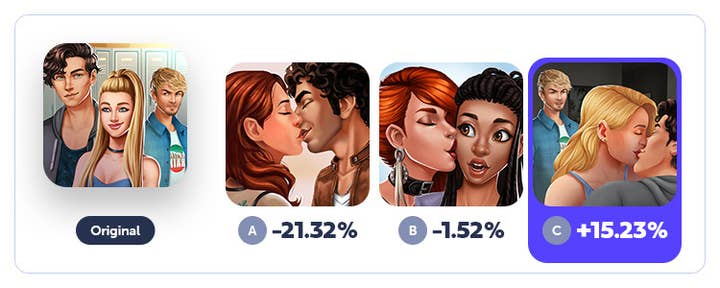How to revive your struggling mobile game
Sponsored article: What can you do if you have a mobile app that you're investing a lot of resources in, but installs and revenue are low?
At Lab Cave, we take a 360 approach to launching and supporting mobile apps.
We've worked on over 700 titles and developed a process that covers App Store Optimization (ASO), ad mediation, monetization, publishing, analytics and User Acquisition all under one roof in the middle of (mostly) sunny Madrid.
Be seen
Francisco González Beldad, Lab Cave ASO/CRO specialist:
The first thing to focus on to revive your app is attracting more users through ASO. You can increase your app's visibility in stores' Search and Browse (Explore on Google Play) channels by adding new keywords to increase page visits and optimizing your storefront's creative elements to increase your visits to installs conversion rate. Simply put: the words and pictures need a makeover!
My teammate Virginia H. Plaza (business analyst specialising in ASO) has written a deep dive on ASO here that will give you a more complete picture, but my advice is to begin with your important keywords. If an app is established but could perform better there's a good chance it has already consolidated its position in search rankings for some detailed searches, but perhaps not for broader terms that are still within the relevant scope of the app.
If new keywords increase traffic but installs are lagging, then your creative assets are letting you down
If new keywords increase traffic to your page but installs are lagging, then your search optimization is working but your creative assets are letting you down. Optimize your assets! A new icon is a great place to start -- it's the first thing new users will see on their Browse (Explore for Google Play) and Search pages and it will remind existing users that your app is still alive. New screenshots and feature graphics (for Google Play) should follow and they should all highlight the unique features and strengths of your app with strong imagery and calls to action.
At Lab Cave, we have a lot of data to call upon when deciding what makes an image strong or a call to action appealing, but you can research the market yourself by testing, testing, testing. Remember, not all art concepts will work for both iOS and Android users, and the same creatives won't achieve identical results in different parts of the world. Split your audience and A/B test different groups to optimize your assets.
Testing your ASO is a continual process and should be a regular and essential facet of your app growth activities. The app market is always changing, so your app store presence needs to follow suit. Try to put time aside every week (or even every day) to work on improving your metadata and creatives and keep that organic traffic flowing to your app!

Finding the right tools for ad monetization
Pedro Miranda, Lab Cave head of product, ad mediation:
After increasing organic traffic and installs with good ASO, you will naturally start to see an increase in your app's revenue, but it's likely your app can perform even better if you're able to optimize your monetization strategies.
You can begin by optimizing ad revenue through your ad mediator. At Lab Cave, we have our own transparent ad mediation platform to effectively monetize any app; we always advise working with an unbiased mediator.
The majority of ad mediators prioritize the ads of other businesses using their own ad network, but a transparent ad mediator will have nothing to hide and can make more data available, which allows you to make better data-driven decisions. You will make more money when the ad mediator's priority is serving the right ads, not just their ads.
It's likely your app can perform even better if you're able to optimize your monetization strategies
By testing new ad strategies on a small group first to see how it affects their experience and retention you can use the data to modify your monetization strategy per user. You can show fewer and more efficient ads to users who are converting (paying for in-app purchases) and increase the frequency or formats for users who aren't supporting the app directly yet.
Ultimately, the user's experience comes first. Good, fair monetization that complements the users' progression through the game will let you monetize to your fullest potential without disturbing the users' gameplay experience. The increased revenue can then be used to help you grow your team to ultimately put more time and effort back into your game, to ensure the longest and most successful lifecycle possible.
Scaling your monetization loops
Diego Fuentes, Lab Cave monetization lead:
With an increase in organic installs, ad revenue and available metrics you'll have more data and resources to test new strategies, measure vital key performance indicators (KPIs) and maximize the potential overall income from your app. Whether you're monetizing with ads or in-app purchases, you need a powerful analytics tool to monitor your main KPIs and assess whether your game is well-optimized.
Set time aside to monitor your monetization KPIs -- ARPDAU (Average Revenue Per Daily Active User), LTV (Lifetime Value), ARPPU (Average Revenue Per Paying User), time to first purchase, impressions per DAU (Daily Active User) per ad format and per country, and eCPM (Effective Cost Per 1,000 Users). Find the weak points of your app -- low conversion rate, low retention rate, long times to first purchase, low revenue per paying user -- and prioritize your weaknesses.

As you optimize your ad monetization, be careful not to negatively affect player retention and user experience by forcing too many ads or inappropriate ad formats into your app. Developers often try to keep monetization as high as possible with rewarded video ads, or more and more non-user-initiated ad formats like interstitials, banners or native ads, but it's easy to go too far.
Watching how players respond and knowing your KPIs will help shape development and can change your content roadmap. If your day-one retention is 12%, for example, then you shouldn't be focusing on adding in-app purchases that are only viable on day three or four. The KPIs here make it clear you should focus development efforts on increasing retention, and the result of that should be a more engaging app for more players who want to grab your cool content when the opportunity arises.
There is no magic formula for the right balance, but experience will guide you. A/B testing is the safest way to assess whether a new build improves your KPIs without jeopardizing what already works, and a powerful analytics tool to monitor your key performance indicators and assess whether your game is well-optimized is essential.
Be careful not to negatively affect player retention and user experience by forcing too many ads into your app
User Acquisition and back again
Ignacio Gutiérrez, Lab Cave director of app growth:
Once your app has been optimized and you are converting and monetizing to your fullest potential, you can consider investing in paid User Acquisition (UA), as UA on various channels can bring large volumes of users to your store pages.
To achieve a successful UA campaign you will need to select among the top ad networks, define and target your audience, design high-converting ad creatives and set your monthly budget at a level to make your cost per install lower than a given user's life-time value. And then it's time to go back to the beginning.
Additional rounds of App Store Optimization will let you reach new and broader audiences. Increased traffic brings more data and increased income that will let you test new strategies like running CSPs (Custom Store Pages) to identify your true audiences and create assets that are the most appealing to audiences in the Locations you are targeting. There's always an opportunity for more optimization, better monetization and greater user acquisition.

Conclusion
The right creatives and optimization can turn a failing app into a huge success for your studio. One of our favorite examples from our own catalog was the complete storefront redesign of My High School Summer Party -- a casual narrative drama about romance and dating. Taking this full 360 approach, plus a lot of hard work from our talented team, we were able to drive a 314% increase in installs on the Google Play Store and a 49% increase on Apple's App Store.
Over several months prior we ran A/B tests on Google Play to test different assets with our new targeted users. Some tests were unsuccessful while others saw improvements of more than 30% versus the original creative assets.
In our tests the majority of the app's growth came from changes to the store metadata, but we took a further step and renamed the app to better reflect the user's experience. My High School Summer Party became My Love & Dating Story. The original title reflected the plot of one of the stories in the game but it wasn't appealing to the true audience who would enjoy it. We changed the name and focused instead on themes of desire, romance, betrayal, fantasy, seduction and horror -- classic drama tropes that appealed to users with a love of narrative and role-playing.
After finding the correct audience for the game and making sure players could find it, we opened new geos and we found the correct mix of ad networks that were strong in those locations to increase the app's ARPDAU, LTV and ARPPU.
Not every app needs a whole new identity, but My Love & Dating Story illustrates the transformative power of a complete 360 approach. If you need support or advice on your own growth strategy, we want to hear from you. We are Lab Cave and we're here to help.
Lab Cave by SunMedia has recently launched a complete 360 mobile growth platform focused on App Store Optimization, mediation, monetization, user acquisition and mobile publishing. Visit Lab Cave Games at its new homepage, and contact Lab Cave at hola@labcavegames.com.